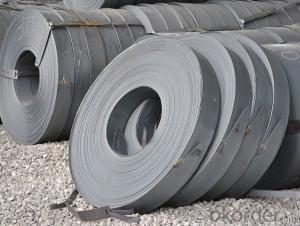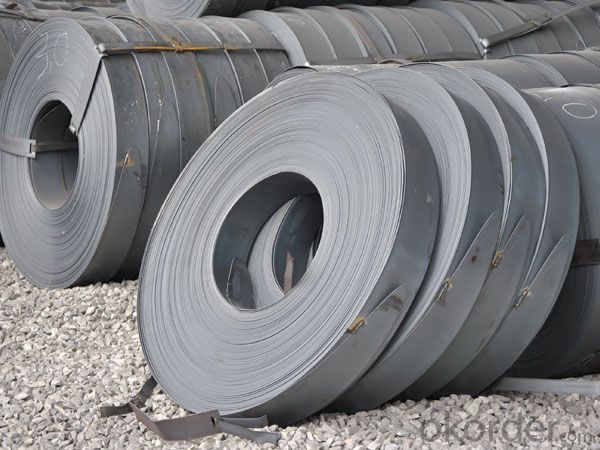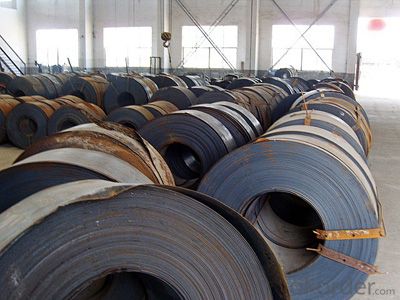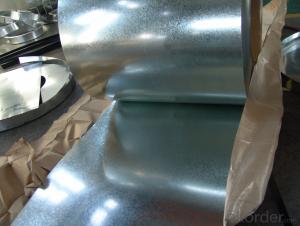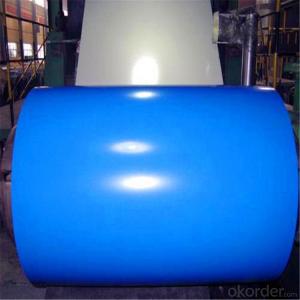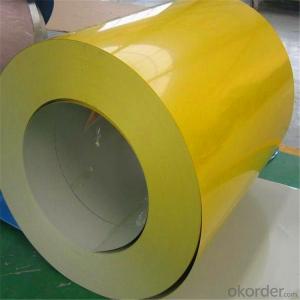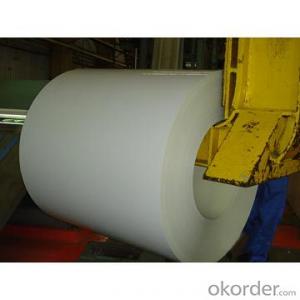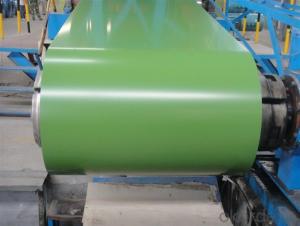Hot Dip Galvanized Steel Coil, GI, PPGI Good Quality
- Loading Port:
- Tianjin
- Payment Terms:
- TT OR LC
- Min Order Qty:
- 1000 m.t.
- Supply Capability:
- 10000 m.t./month
OKorder Service Pledge
OKorder Financial Service
You Might Also Like
Quick Details
| Standard: | ASTM,JIS | Grade: | DX51D | Thickness: | 0.25-0.8MM |
| Place of Origin: | Zhejiang China (Mainland) | Brand Name: | TIANNU | Model Number: | PPGI |
| Type: | Steel Coil | Technique: | Hot Rolled | Surface Treatment: | Galvanized |
| Application: | CONSTRUCTION | Special Use: | Silicon Steel | Width: | 800-1250MM |
| Length: | 100-600METER/MT | color: | up to you |
Packaging & Delivery
| Packaging Detail: | hot dip galvanized steel coil, GI, PPGI STANDARD EXPORT PACKING |
| Delivery Detail: | WITHIN 25 DAYS AFTER DOWNPAYMENT |
Specifications
hot dip galvanized steel coil, GI, PPGI Various pattern with competitve price
Detailed Product Description
hot dip galvanized steel coil, GI, PPGI :
Printed Prepainted steel with various pattern like wood grain, brick grain, marble grain.
1. Base material: GI, Cold Roll, or ALU- ZINC steel
2. Pattern: can be customized according to customers requirements.
3. Suitable for indoor or outdoor decoration, color lasting for at least 10 years for outdoor using, could for roll forming.
4. Protective film can be provided according to customer needs.
5. Paint: PE or PVDF
6. Width and Thickness: width within 1250mm, thickness from 0.23-0.8
7. Please contact us for product and pattern e-catalog.
- Q: What are the factors to consider when selecting steel coils for a specific application?
- There are numerous factors to consider when choosing steel coils for a particular application. These factors encompass the type of application, the necessary strength and durability, the desired aesthetic appearance, the allocated budget, and any specific industry standards or regulations that must be met. Firstly, it is crucial to identify the type of application for which the steel coils will be utilized. Various applications may necessitate different steel types with varying properties. For instance, if the coils are intended for use in structural construction, high-strength steel with exceptional structural integrity may be necessary. Conversely, if the coils will be employed in automotive manufacturing, steel with good formability and weldability may be more appropriate. The required strength and durability represent another crucial factor to contemplate. This includes factors such as load-bearing capacity, resistance to corrosion, and the ability to withstand extreme temperatures or environmental conditions. The selected steel coils must be capable of enduring the specific stresses and strains inherent in the intended application. The desired aesthetic appearance is also significant, particularly in applications where the steel coils will be visible. Considerations may include the surface finish, color, and texture of the steel coils. This consideration is especially pertinent in industries such as architecture or interior design, where the visual appeal of the steel plays a pivotal role. Budgetary constraints should also be taken into account when selecting steel coils. The price of different steel grades and types can vary significantly. Striking a balance between desired properties and available budget is important. In some cases, compromising on certain factors may be necessary in order to adhere to financial limitations. Lastly, any specific industry standards or regulations must be considered during the selection process. Certain industries, such as aerospace or automotive, may impose strict requirements on the materials used in their products. It is essential to ensure that the chosen steel coils meet all necessary standards and regulations in such cases. In conclusion, when choosing steel coils for a specific application, careful consideration should be given to factors such as the type of application, required strength and durability, desired aesthetic appearance, budget, and industry standards or regulations. By taking these factors into account, an informed decision can be made to select the most suitable steel coils for the intended application.
- Q: Hi my dad bought a stain steel refridg. yesterday, and we went to clean it and it looks all streaky and gets finger prints and stuff on it too easily we used mr clean multisurface cleaner and it didnt work to well is there a certain type of cleaner we are supposed to use?
- buy stainless steel wipes at the grocery store. they work great.
- Q: PLS tell me all Foam Steel Characteristics and use?Thanks
- Foam steel [often steel foam] is used in applications that require light weight but high rigidity and strength. Watertight doors on modern ships are often made of foam steel. Pressure doors on aircraft are possible uses. As we keep striving for lighter weights in cars, foam steel might have some useful applications in bodies. There is a technical paper online that is in .pdf format that has a good discussion of the process and characteristics of foam steel.
- Q: What is the minimum diameter of a steel coil?
- The minimum diameter of a steel coil can vary depending on the specific manufacturing process and desired application. However, in general, the minimum diameter of a steel coil is determined by factors such as the thickness of the steel and the capabilities of the equipment used in the manufacturing process.
- Q: What are the different types of steel coil cutting machines?
- There are several different types of steel coil cutting machines available in the market, each designed to cater to specific needs and requirements. Some of the commonly used types include: 1. Slitting Machines: Slitting machines are used to cut steel coils into narrower strips. They have multiple circular blades that make precise cuts along the length of the coil, allowing for the production of narrower coils or strips. 2. Cut-to-Length Machines: Cut-to-length machines are designed to cut steel coils into specific lengths. These machines can accurately measure and cut the coil to the desired length, ensuring uniformity and precision. 3. Rotary Shears: Rotary shears are heavy-duty cutting machines that can handle thicker and larger steel coils. They use a rotating blade to cut through the coil, making it suitable for cutting thicker gauge materials. 4. Multi-Blanking Machines: Multi-blanking machines are designed to cut steel coils into multiple smaller blanks simultaneously. These machines can cut the coil into various shapes and sizes, making them ideal for producing multiple parts from a single coil. 5. Slit and Cut-to-Length Combination Machines: These machines combine the functionalities of slitting and cut-to-length machines, allowing for both narrow strip cutting and length cutting in a single process. They are versatile and efficient, saving time and increasing productivity. Each type of steel coil cutting machine has its own advantages and is suitable for specific applications. The choice of machine depends on factors such as coil thickness, desired strip width, required length accuracy, and production volume.
- Q: How are steel coils used in the production of construction components?
- Steel coils are used in the production of construction components in various ways. One common use is for the manufacture of steel beams and columns, which are essential structural elements in buildings and other large structures. The steel coils are processed and shaped into the desired dimensions, then cut and welded to form the beams and columns. Steel coils are also used in the production of roofing and wall cladding materials for construction. These coils are often coated with protective layers to enhance durability and resistance to corrosion. The coils are then shaped and formed into roofing sheets, wall panels, or siding materials that provide both aesthetic appeal and functional protection to the building. Another important application of steel coils in construction is for the production of reinforcing bars, commonly known as rebar. Rebar is used to provide strength and stability to concrete structures, such as foundations, slabs, and walls. The steel coils are processed and cut into specific lengths, then shaped and twisted to form the required reinforcement bars, which are then embedded within the concrete during construction. Furthermore, steel coils can be used in the production of various other construction components, such as pipes, tubes, and profiles. These components are used for plumbing, heating, ventilation, and other structural applications. The steel coils undergo different manufacturing processes, including rolling, welding, and shaping, to achieve the desired dimensions and properties of these components. In summary, steel coils play a crucial role in the production of construction components. They are used to manufacture steel beams, columns, roofing and wall cladding materials, reinforcing bars, pipes, tubes, and profiles. These components are vital for the construction industry, as they provide strength, durability, and functionality to buildings and other structures.
- Q: How are steel coils used in the manufacturing of tubes?
- Steel coils are used in the manufacturing of tubes by being unwound and fed through a tube mill where they are shaped and welded together to form seamless or welded tubes.
- Q: How are steel coils used in the manufacturing of automotive doors?
- Steel coils are used in the manufacturing of automotive doors as they serve as the primary raw material for forming the door panels. These coils are processed through various manufacturing techniques such as stamping, cutting, and bending to shape the door panels. The strong and durable nature of steel makes it an ideal material for automotive doors, providing structural integrity and protection to the vehicle.
- Q: How are steel coils inspected for hardness using hardness testers?
- Steel coils are inspected for hardness using hardness testers in order to determine the strength and durability of the steel. Hardness testers are devices specifically designed to measure the resistance of a material to indentation or penetration. In the case of steel coils, the hardness testers typically used are either Rockwell or Brinell testers. Both methods involve applying a specific force to the surface of the steel coil and measuring the depth of indentation or the size of the impression made. For Rockwell testing, a steel ball or a diamond cone is pressed into the surface of the coil with a predetermined force. The depth of penetration is measured and compared to a standardized scale to determine the hardness value. Different scales are used depending on the size and type of indenter used. Brinell testing, on the other hand, involves using a spherical indenter made of tungsten carbide or hardened steel, which is pressed into the surface of the steel coil with a known force. The size of the resulting indentation is measured and compared to a standardized table to determine the hardness value. Both methods provide a quantitative measure of the steel coil's hardness, which indicates its ability to resist deformation, wear, and cracking. The results obtained from hardness testing can then be used to ensure the steel meets specific quality standards or customer requirements. It is important to note that the inspection process may involve sampling, where representative sections of the steel coil are tested, or it may involve testing the entire coil, depending on the specific requirements of the inspection. Additionally, proper calibration and maintenance of the hardness testers are crucial to ensure accurate and reliable results.
- Q: I'm quite confused...i watched all of steel angel kurumi (the 28 episodes) and then continued to steel angel kurumi zero. it was an entire different story line with only the steel angels being the same. the world is different the guys are different, and there is a new character. Even the humor is gone. its like a whole different series. So what gives, what is the relationship between them?
- Steel Angel Zero is an OVA (Original Video Animation), a very short animation that went straight to DVD. It probably was written because Kurumi was so popular, and the producer wanted to check the waters for whether they should make a second season. It's pretty hard to keep track of what anime is which, especially in the more popular series. If you think Zero is worth zero, try Steel Angel Kurumi 2 (anime, 12 episodes), and Steel Angel Kurumi Encore (OVA, 4 episodes) as well.
Send your message to us
Hot Dip Galvanized Steel Coil, GI, PPGI Good Quality
- Loading Port:
- Tianjin
- Payment Terms:
- TT OR LC
- Min Order Qty:
- 1000 m.t.
- Supply Capability:
- 10000 m.t./month
OKorder Service Pledge
OKorder Financial Service
Similar products
Hot products
Hot Searches
Related keywords
